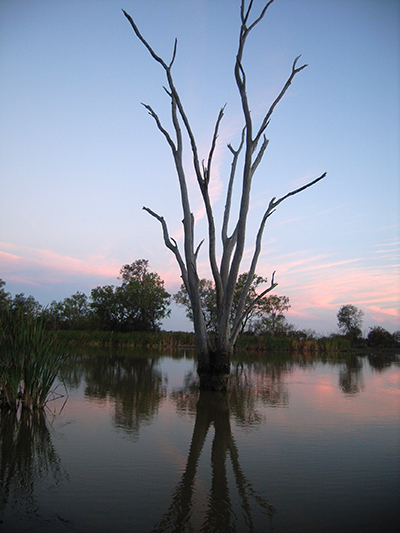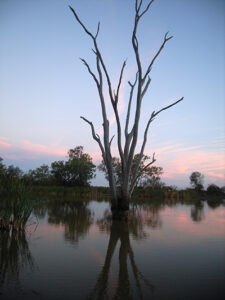Contributor: John Schott, Rochester Institute of Technology

As snow begins to melt at the close of winter, large lakes receive warm spring river run-off carrying pollutants that are potentially harmful to phytoplankton and the fish that feed on them. The warmer water initially stays near the shoreline, not mixing with the cold winter lake water.
Salt, sediment, fertilizer and chemical pollutants in the run-off are concentrated in a small band of warmer water close to the shore called the thermal bar. By June, the lake’s waters are well mixed, and pollutants brought into the lake are very dilute.
Most lakes in regions that have cold winters and warm summers have an annual episode of thermal bar formation. But only in large lakes does the thermal bar persist for two months and become potentially toxic to lake plants and animals.
John Schott, of the Rochester Institute of Technology’s Digital Imaging and Remote Sensing Laboratory, is using Landsat imagery to help predict the extent, duration, and impacts of the thermal bar formation in the Laurentian Great Lakes. For the two months that the bar persists, it controls most of the fluid flow in the lakes and has a dramatic impact on water quality.
Landsat offers the unique opportunity to study both the thermal bar processes and the direct impact on the water quality at both whole lake scales and localized scales. The combination of spectral coverage, synoptic perspective, and high resolution is a unique asset that may be used to further understand the water quality issues affecting Great Lakes coastal waters.
Schott’s work may eventually be helpful in understanding how the release of industrial pollutants into the Genesee and Niagara rivers during the thermal bar formation in Lake Ontario effect the lake’s ecosystem. Thermal bar formation occurs during the spring when plants and animals in the lake are in the early stages of development.
Schott and his research team are using Landsat data to determine how large-scale hydrodynamic processes in the Great Lakes control water quality. The thermal bar formation is modeled using Landsat data and three-dimensional hydrodynamic models. Eventually, the models will track the annual evolution of the thermal bar and attempt to predict the bar’s formation several months in advance.

Landsat Insights: Wetland History in Your Hand
Practitioners managing the wellbeing of wetlands have a new tool at their disposal. The Wetland Insight Tool, developed by Geoscience Australia, provides a visual summary of 35+ years of wetland dynamics.


